8 Best Crunch Variations (with Pictures!)
When speaking of ab isolation exercises, one would be remiss to forget the quintessential crunch.
However, because of the sheer number of crunch variations out there, it can get overwhelming trying to pin down the right one for you.
For the most part, each crunch variation will simply emphasize a different section of the core muscles. That, or simply adopt a more dynamic movement pattern. A few of the more applicable variations include the decline crunch, side crunch and the bicycle crunch.
What is a Crunch?
Crunches are a core isolation exercise primarily performed as a bodyweight movement. Most variations involve the performer lying on their back and contracting their abdominal muscles so as to curl the torso forwards.
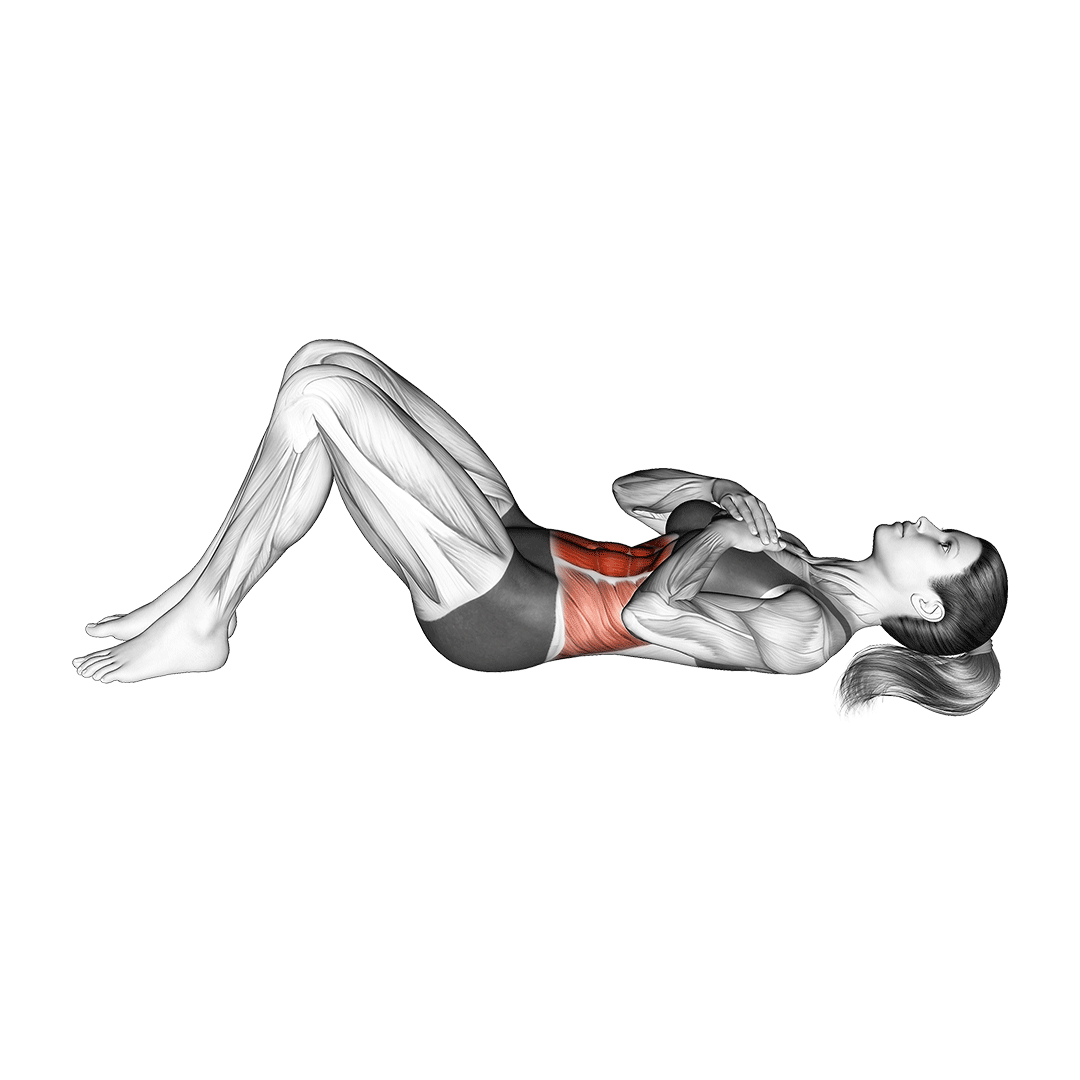
Some controversy surrounds the conventional crunch and its variants, as research points to a comparatively lesser effectiveness to exercises like the plank or leg raise. In addition, depending on technique, the crunch can also be a risk factor for lower back injuries.
Despite these disadvantages, the crunch can nonetheless be an asset to any core workout session if used correctly.
Crunch Variations
1. The Conventional Crunch
The conventional crunch is considered to be the baseline crunch variation in that it features no advanced exercise mechanics and functions solely as an abdominal isolation exercise.
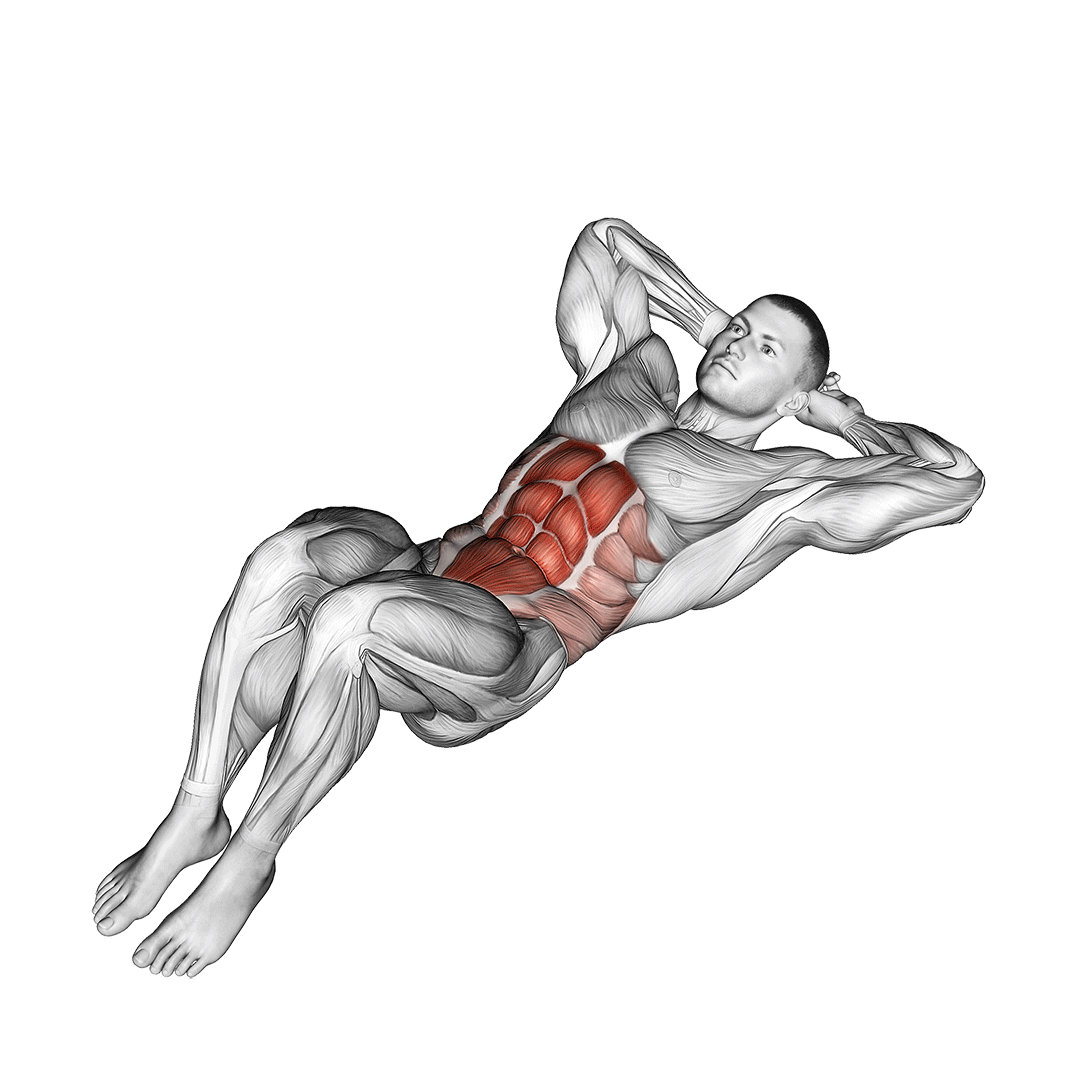
Otherwise simply called “crunches”, this particular variation requires nothing more than a comfortable area to lie atop. It targets no musculature other than the abdominals, and features a comparatively short range of motion.
Benefits as a Crunch Variation
The conventional crunch is considered to be an excellent exercise for targeting the abdominal muscles with significant training volume. This is further helped by its short range of motion and lack of involvement of other muscle groups, creating a truly abs-focused exercise.
How-to:
To perform a crunch, the lifter will lie flat on their back with their knees drawn upwards for stability.

Placing both hands behind their neck, the lifter then contracts their core and draws their chest towards their legs, stopping once the upper back and shoulders leave the ground.
At this point, the repetition is considered to be complete.
2. The Decline Crunch
The decline crunch is simply a regular crunch performed with the body oriented at a decline angle. This is most often achieved through the use of a decline bench.
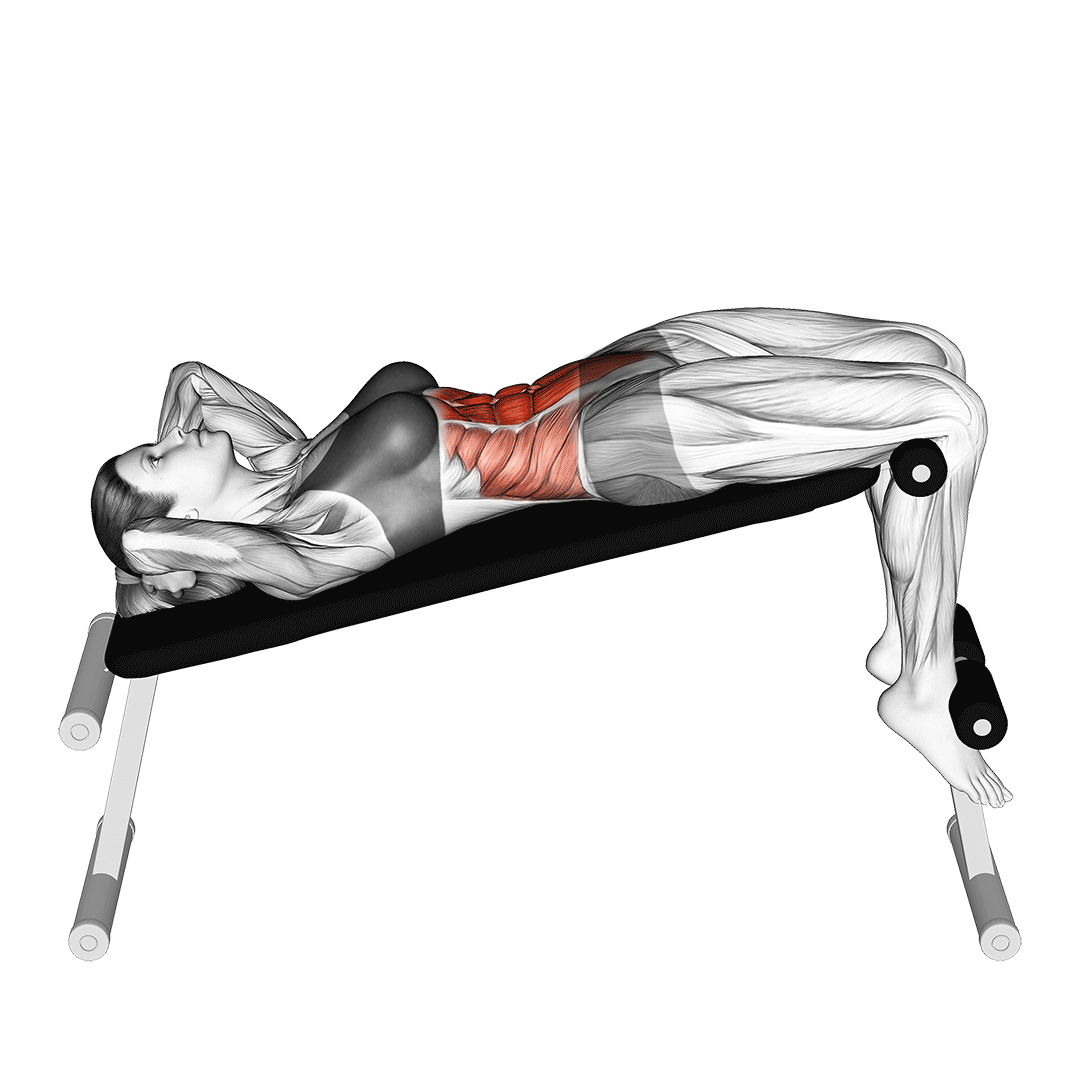
By placing the body at a decline, the exercise’s range of motion can effectively be increased, and will allow for markedly less stress on the lower back.
Benefits as a Crunch Variation
Decline crunches suffer from fewer of the disadvantages that are inherent to the conventional crunch. In addition, the larger range of motion creates a lengthier time under tension, making the exercise more effective for strengthening the core.
How-to:
To perform a decline crunch, the lifter will hook their feet into the pads of a decline bench, squeezing their glutes and keeping the lower back against the bench.
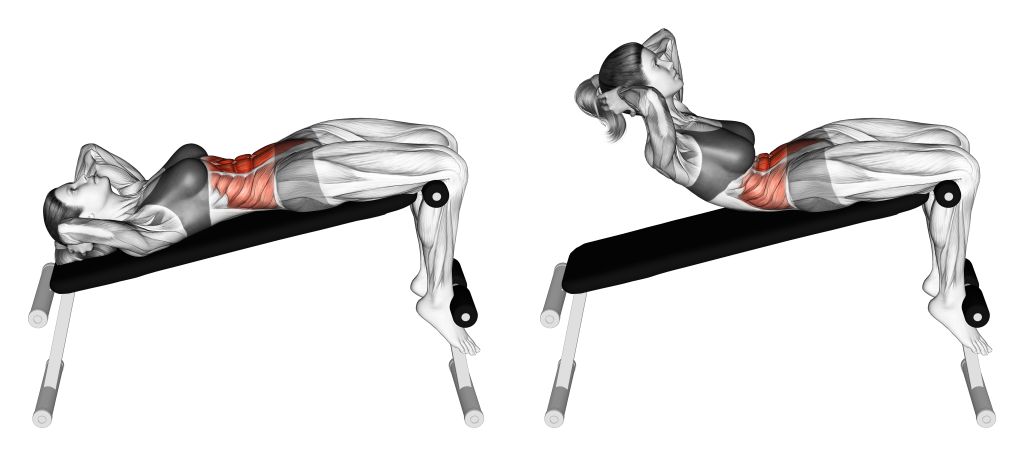
Once secured, the lifter then contracts their core and raises their chest off the bench, drawing their torso upwards until the upper back and shoulders are raised into the air.
To complete the repetition, the lifter then simply returns their upper back to the bench.
3. The Reverse Crunch
As one can guess from its name, the reverse crunch is a crunch variation involving the lower half of the body being raised, rather than the upper half. This creates a movement pattern quite similar to lying knee-ups, although with a shorter range of motion.
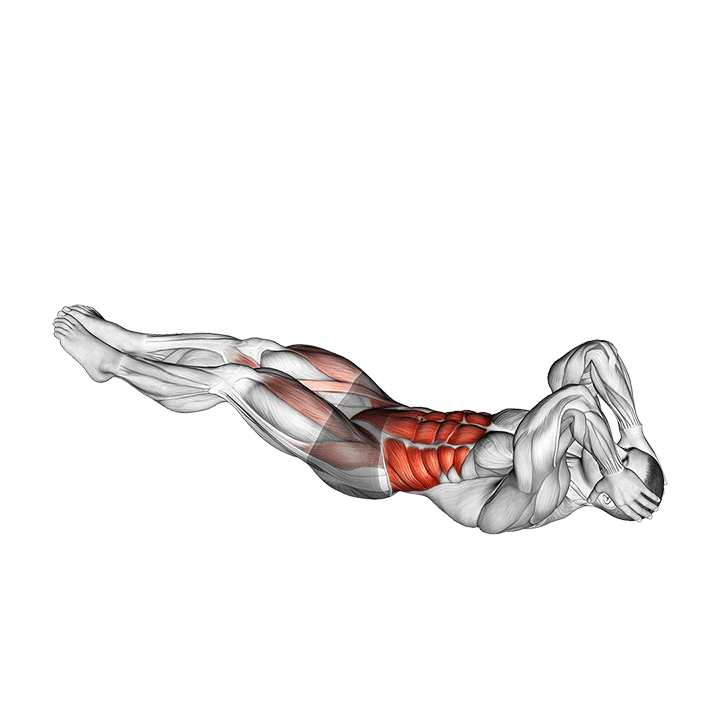
Reverse crunches are more effective at targeting the lower section of the rectus abdominis, and do not suffer from the same risks and disadvantages as most other crunch variants do.
Benefits as a Crunch Variation
As previously mentioned, the reverse crunch is an excellent variation for placing greater emphasis on the lower section of the six-pack. In addition, because no strain is placed on the lower back, it is considerably safer than most other kinds of crunch.
How-to:
To perform a repetition of the reverse crunch, the lifter will lie flat on their back with their hands beneath their glutes for greater stability. The knees should be drawn up with the heels flat on the ground.

Then, keeping the neck and back straight, the lifter will contract their core and raise their legs - still bent - into the air, stopping once they are parallel with the hips.
Legs now held upwards, the lifter will complete the repetition by slowly returning their heels back to the floor, deriving much of the force solely from their abs.
4. The Side Crunch/Oblique Crunch
Side crunches are a unique variation of crunch where the lifter will twist their torso to one side as they raise it upwards - thereby directly targeting the oblique muscles of the core.
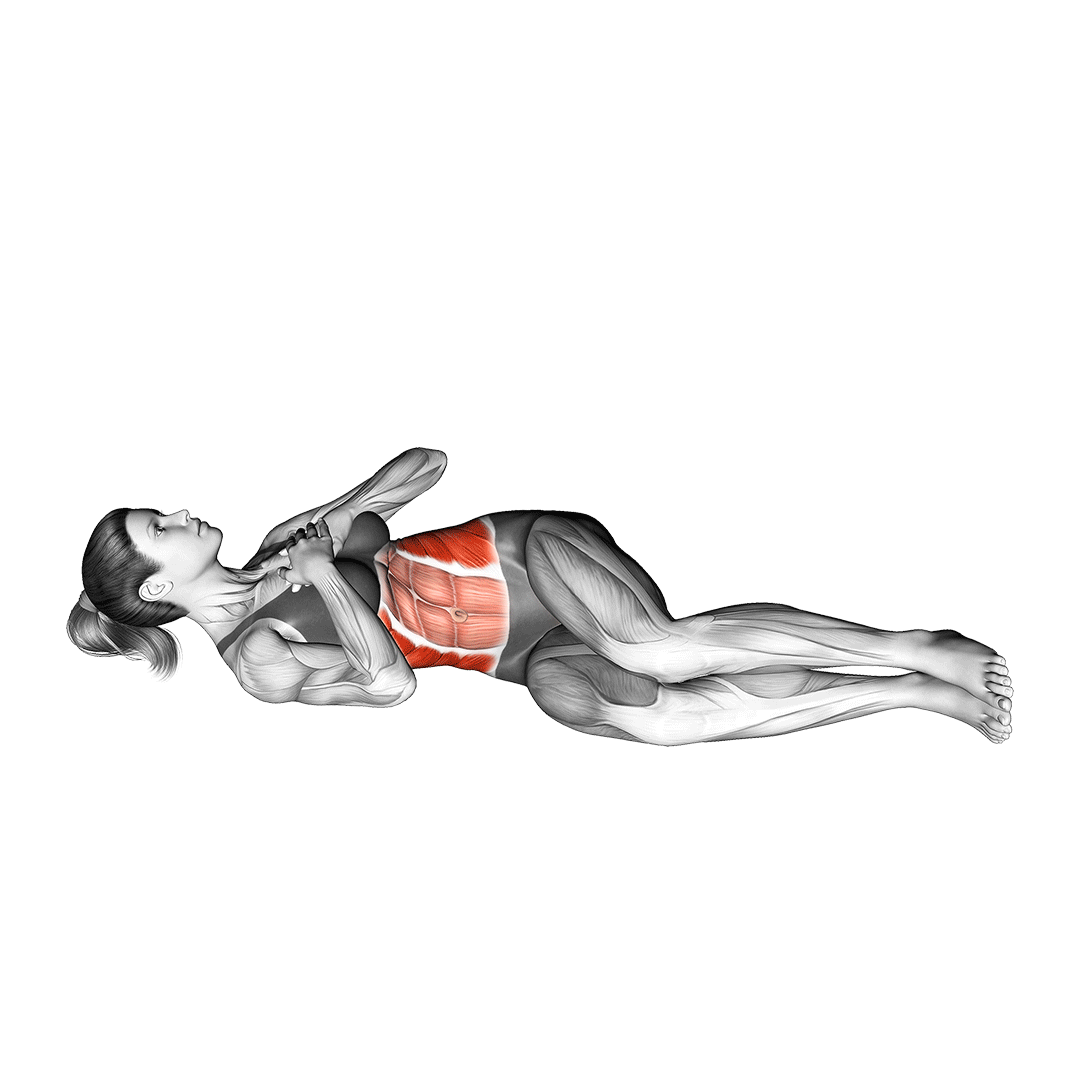
Apart from twisting the torso somewhat to the side, the side crunch is otherwise identical to a conventional crunch. This includes much the same recruitment pattern of the abdominal muscles, small range of motion and the same mechanics.
Benefits as a Crunch Variation
The side crunch is invaluable for targeting an often-forgotten muscle group - that being the obliques.
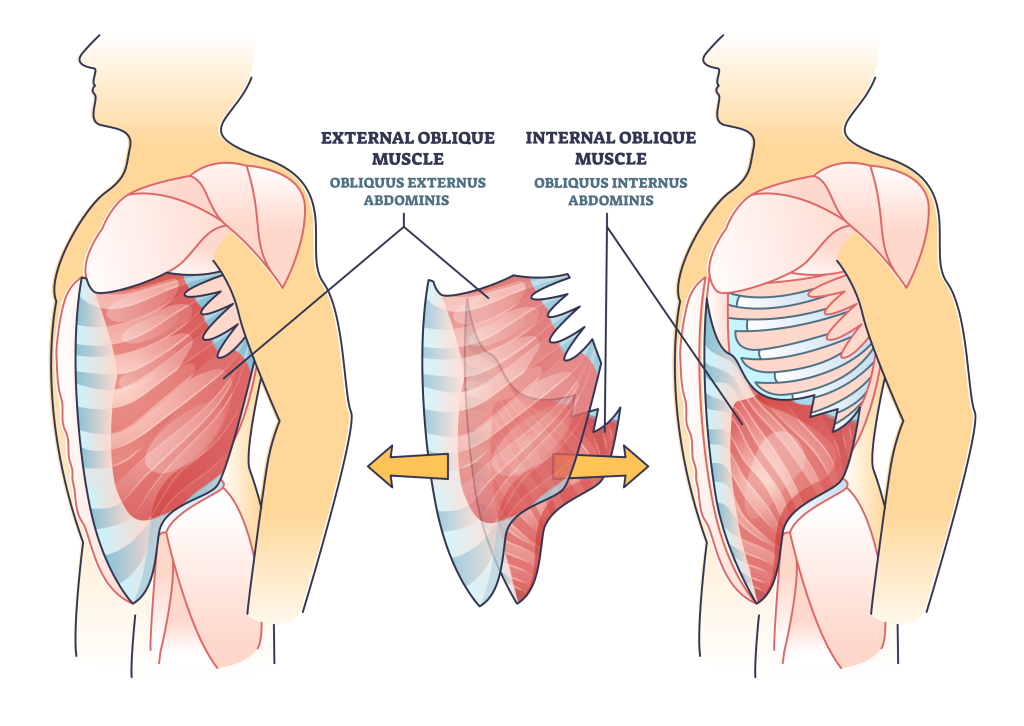
With regular performance of the side crunch, the lifter’s core stability and capacity to rotate their torso is directly improved.
How-to:
To perform a repetition of the side crunch, the lifter will assume the same stance as a regular crunch. Flat on the back with the knees drawn up and the hands supporting the back of the neck or head.

Once in the standard crunch position, the lifter will contract their core and raise their upper back off the ground. Where the side crunch differs, however, is that the lifter will angle one elbow towards their knee, twisting their upper torso as they do so.
When the angled elbow is now pointing directly at the lifter’s knees, they will reverse the rotation of their upper body and return to the floor.
This completes the repetition.
Don’t forget to also perform the exercise with the opposite side of the body.
5. The Frog Crunch
The frog crunch is an advanced crunch variation combining aspects of both the regular crunch and the lying leg raise. This works the abdominals and other nearby core muscles to a far more intense level, maximizing development and helping to correct imbalances of the rectus abdominis.
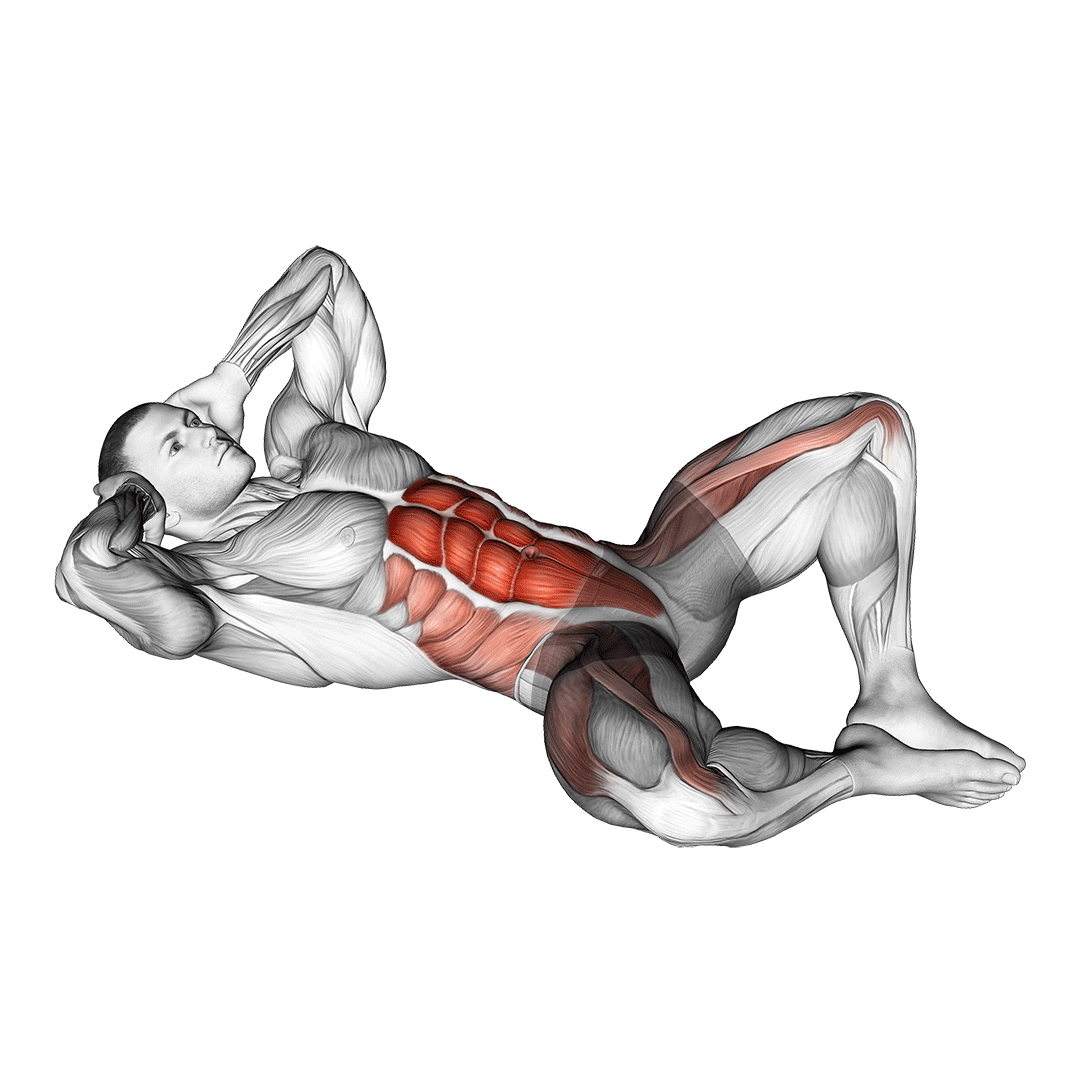
Certain versions of the frog crunch has the lifter press the soles of their feet together as the exercise is performed, further maximizing core contraction. For the sake of accessibility, this entry explains how to do the easier variation of the frog crunch.
Benefits as a Crunch Variation
The frog crunch is a highly effective progression from either the conventional crunch or lying leg raise.
Because it works the abs from both the upper and lower sections, the rectus abdominis is more likely to develop in a balanced and comprehensive manner.
In addition, because frog crunches are significantly more intense than other crunch variations, less volume will be required to reach optimal training intensity. This both saves the lifter time and reduces the risk of lower back strain from overuse.
How-to:
Lying flat on the floor with the hands supporting the base of the skull, the lifter will raise their legs upwards as they remain fully extended, core muscles braced.
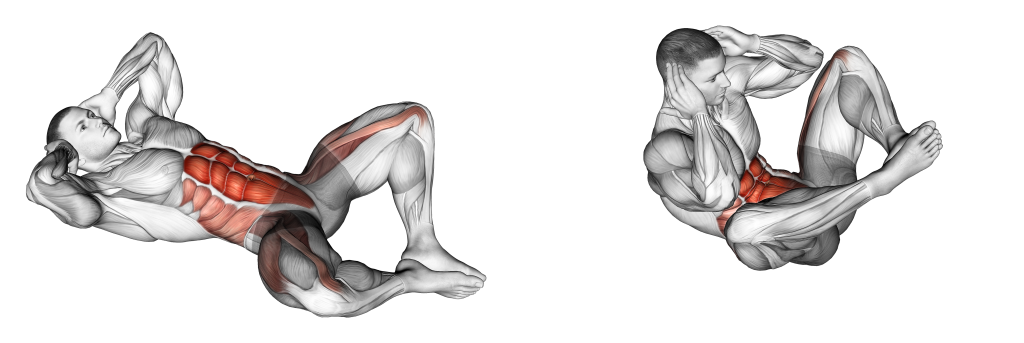
From this starting stance, the lifter then bends their knees towards their chest while simultaneously performing a crunch - raising the upper back off the floor and raising the torso towards their knees.
Once the knees and elbows are nearly touching, the lifter will slowly lower their upper back towards the ground and extend their legs back outwards.
When back in the starting position, the repetition is considered to be complete.
6. The Vertical Leg Crunch
Vertical crunches are another advanced crunch variation most comparable to the frog crunch in execution.
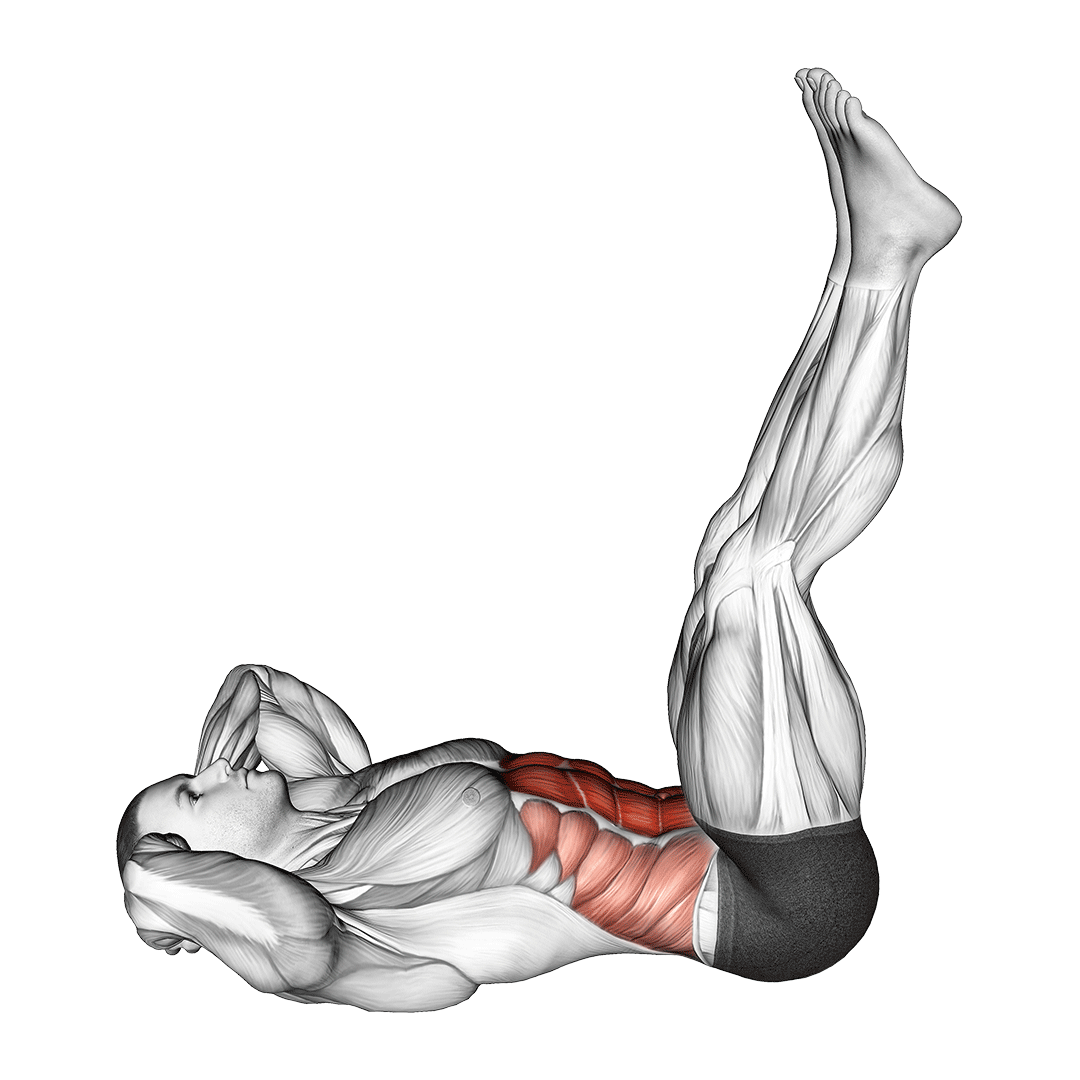
Unlike the latter exercise however, the legs remain extended throughout the entire repetition, making the vertical crunch somewhat easier.
Vertical leg crunches are a highly effective way of working the entirety of the abdominal muscles from two simultaneous directions.
Benefits as a Crunch Variation
Vertical crunches, like frog crunches, act as a highly intense progression from both leg raises and standard crunches, taking the advantages of both with few of their drawbacks.
In addition, vertical crunches can act as both a core exercise and as a method of stretching the posterior chain, especially for the hamstring and glute muscles.
How-to:
To perform a repetition of vertical crunches, the lifter will lie flat on their back, legs loosely extended along the floor. The hands may be placed beneath the lower back for greater stability, or behind the head for support.
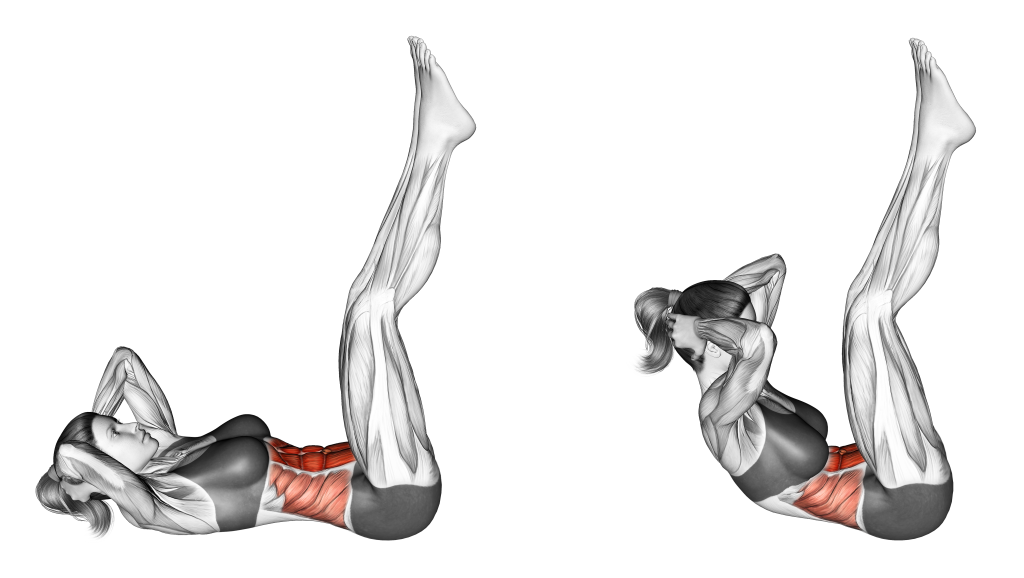
Now in the correct stance, the lifter will contract their core. Simultaneously, they will raise their legs (still extended) up into the air while drawing their upper back off the floor.
The lifter then follows through with this movement until the feet are parallel with the hips and a full crunch range of motion has been achieved.
To complete the repetition, the lifter then lowers their back and legs to the floor once more.
7. The Wall Crunch (Legs Up Wall Crunches)
The wall crunch is exactly as it sounds; a regular crunch performed with the legs raised up against a wall.
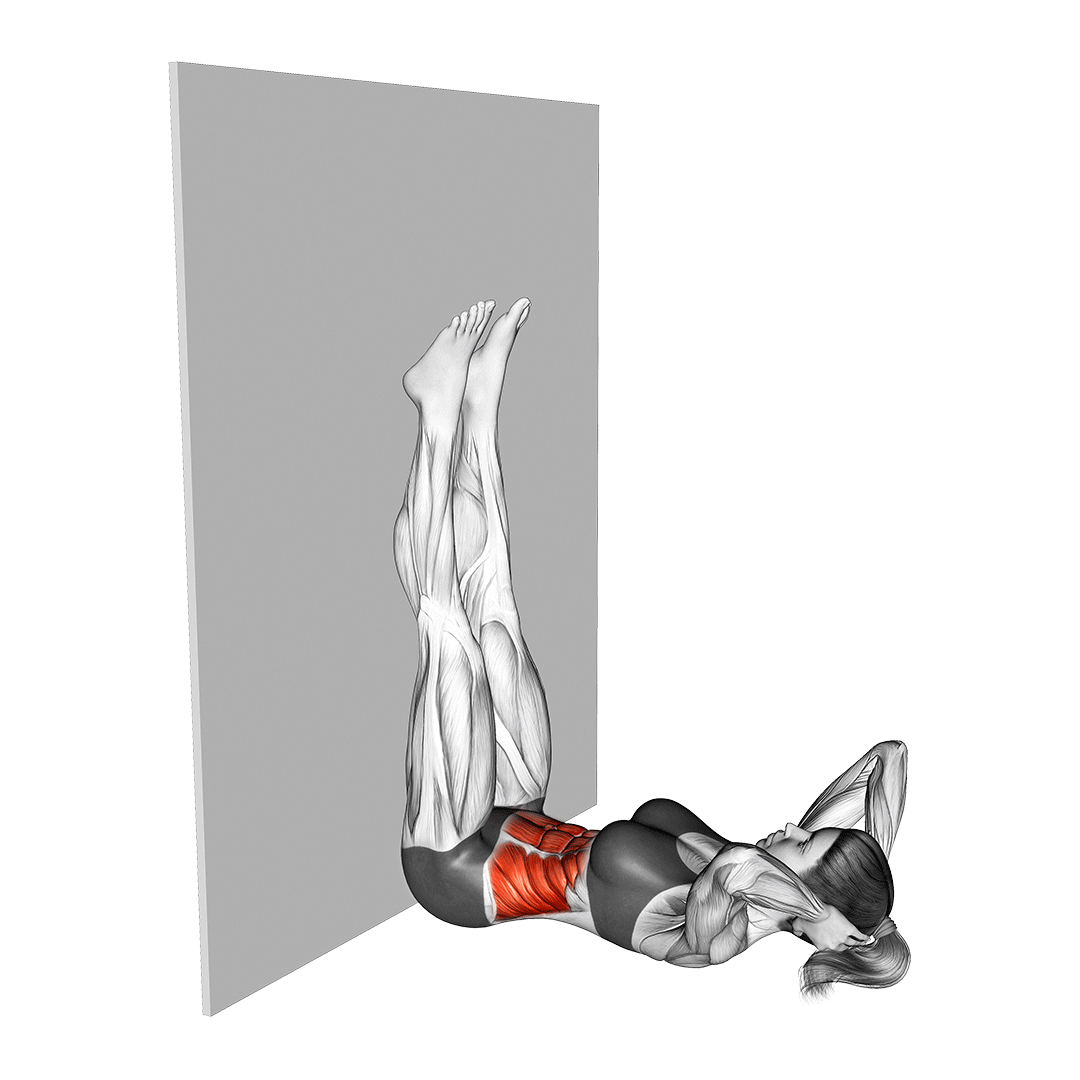
This helps reduce the pressure and impact the exercise can have on the lower back, and helps the performer contract their core to the fullest extent. Lifters with poor posterior chain mobility can make the exercise more forgiving by bending the knees or angling the legs, rather than holding them flat against the wall.
Apart from the legs being up along a wall, the wall crunch is otherwise mechanically the same as a conventional crunch.
Benefits as a Crunch Variation
Wall crunches both reduce the risk of lower back strain and help maximize core contraction. This makes them excellent for lifters who are particularly worried about injuring their lower back from regular crunches, or those who have trouble keeping their core braced throughout a set.
How-to:
To perform a wall crunch, the lifter will lie on their back and raise their legs up a wall - preferably with the knees extended, if possible. Once in this position, the crunch proceeds as normal.
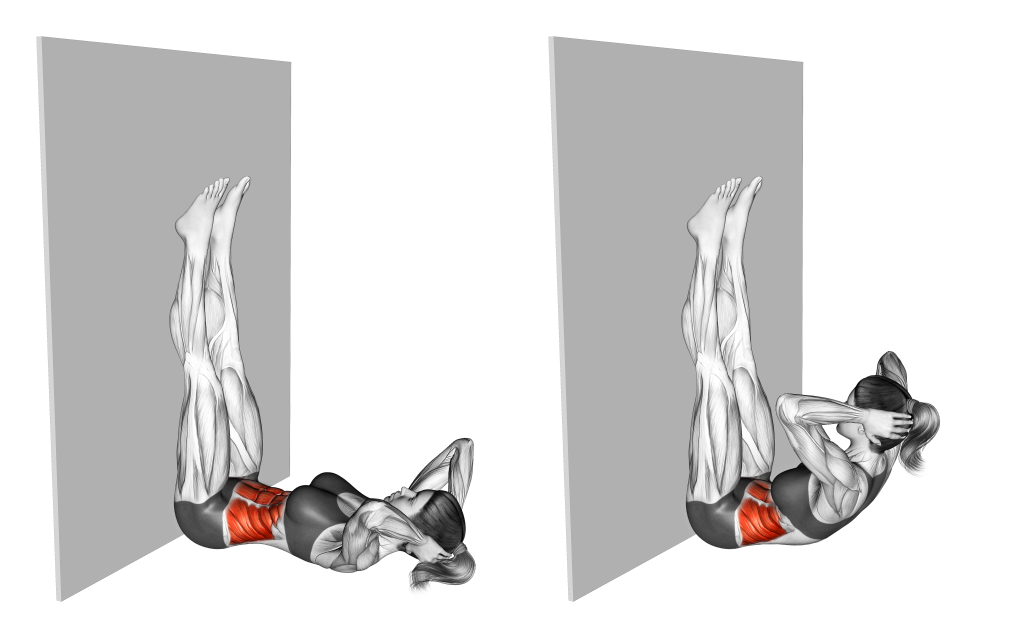
To do so, the lifter simply contracts their core, places their hands behind their skull or neck and raises their upper back off the floor - returning their back to the ground after a count.
When lying flat once more, the repetition is considered complete.
8. The Bicycle Crunch
Bicycle crunches are a more dynamic and highly intense variation of the crunch. When performed, the lifter will rapidly perform a side crunch while simultaneously raising the leg of the opposite side towards their body.
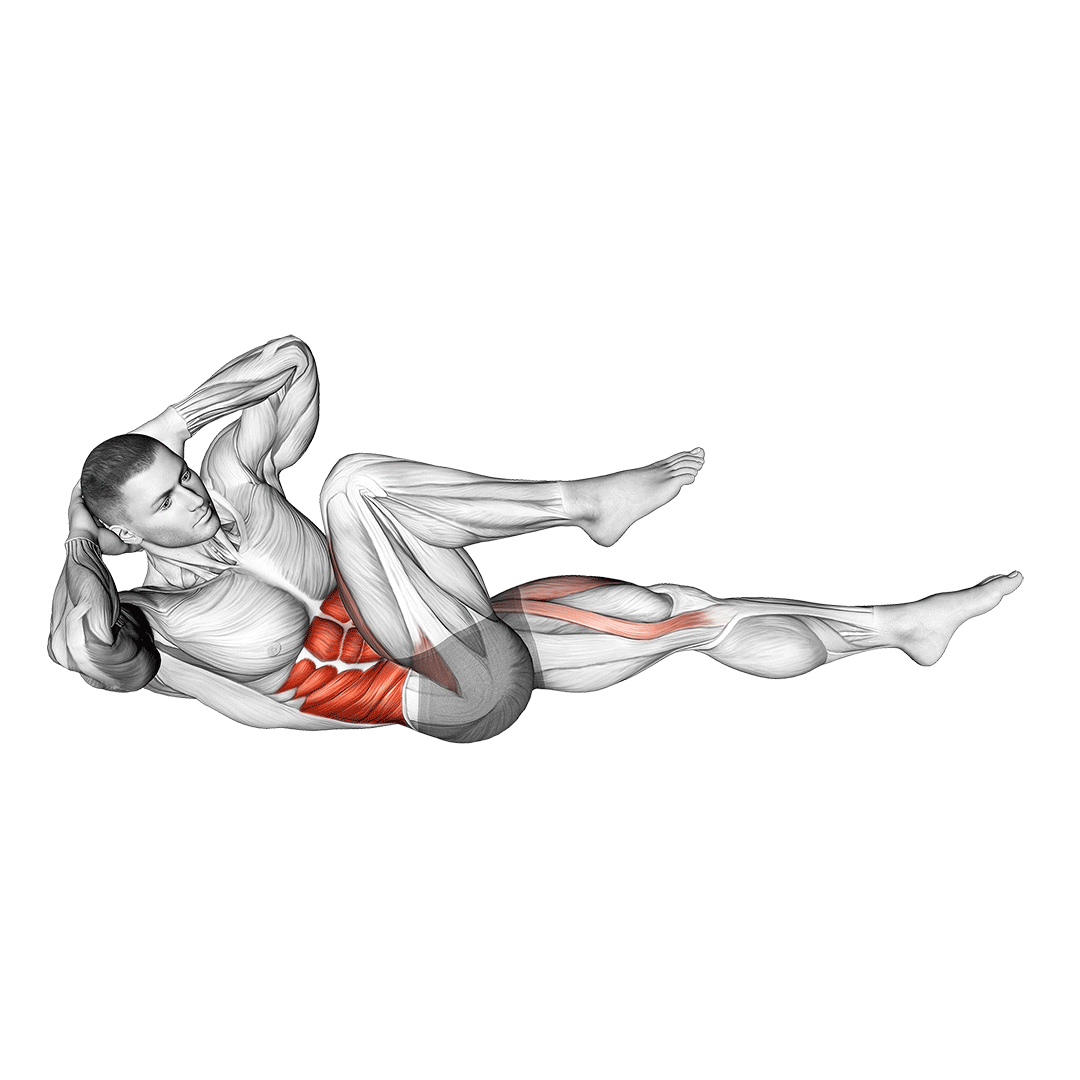
This creates a comprehensive unilateral movement pattern perfect for working the core, burning calories and improving general athleticism.
Benefits as a Crunch Variation
Bicycle crunches are capable of eliciting a wide number of different benefits, depending on how they are performed. Regardless of volume or tempo, bicycle crunches are quite effective for working the often-forgotten oblique muscles alongside the usual abdominal and lower back musculature.
Furthermore, the bicycle crunch is quite effective for burning calories, improving bodily coordination and developing other skills related to general athleticism.
How-to:
To perform a repetition of the bicycle crunch, the lifter will lie flat on their back with their knees drawn up and their hands supporting the base of their head.

Once in the correct stance, the lifter will contract their core musculature and draw one knee upwards and towards their head, simultaneously raising their upper back off the floor and turning their torso in the opposite direction to the knee.
If done correctly, one elbow should be nearly touching the raised knee on the opposite side of the body. The lower back, as always, should remain against the floor.
With the exercise complete with one side of the body, the lifter then rapidly repeats the motion with the sides switched - continuing to do so until the set is complete.
Which Crunch Variation is Best?
Because each type of crunch serves a different purpose, there is no “best” variation to pick.
Instad, it is best to select a crunch variation that best meets your needs while simultaneously fitting your current level of training experience.
If simple abdominal training is your only goal, then picking the conventional crunch or a more intense progression is the route to take. If you’re an athlete, try bicycle crunches or frog crunches. Likewise, for oblique training, the side crunch is best.
References
1. Wikipedia contributors, "Crunch (exercise)," Wikipedia, The Free Encyclopedia, https://en.wikipedia.org/w/index.php?title=Crunch_(exercise)&oldid=1163309754 (accessed August 5, 2023).
2. Sapstead, Gareth. Ultimate Abs: The Definitive Guide to Developing a Chiseled Six-pack. United Kingdom: Human Kinetics, 2022. ISBN: 9781718201392, 1718201397
